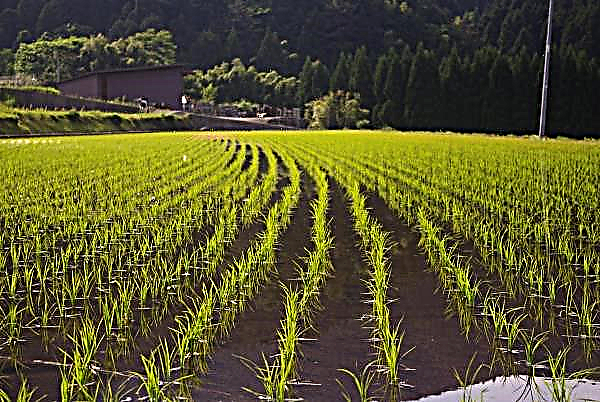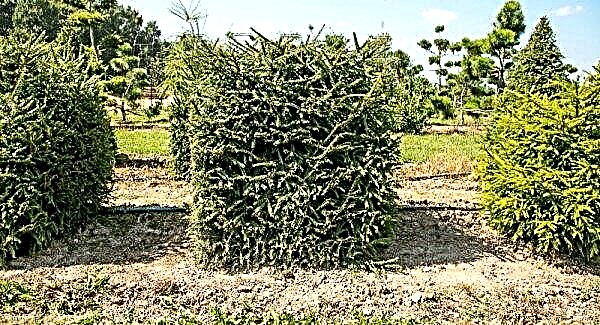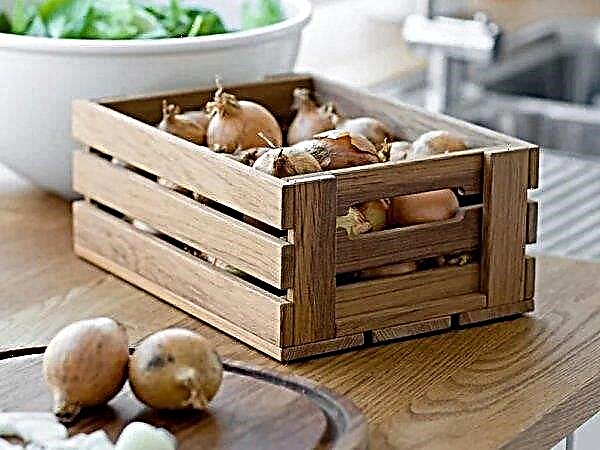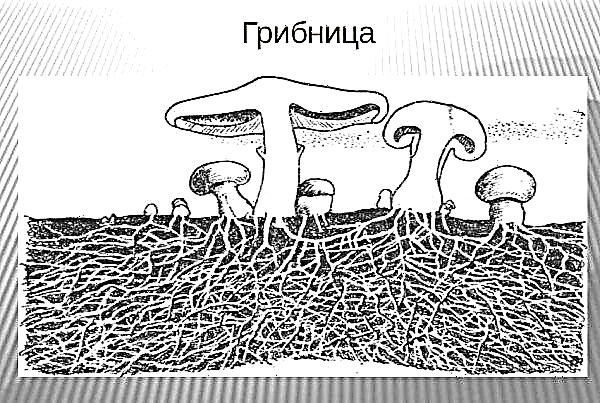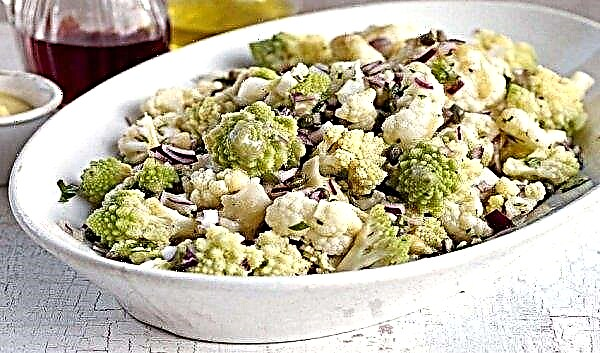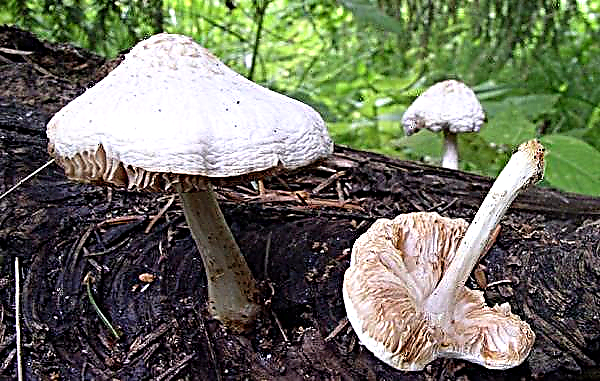Apricot varieties Kichiginsky in recent years has gained great popularity among gardeners. To grow a tree of this variety at home, you need to familiarize yourself with its main characteristics, timing and planting technology, as well as learn about further care for the plant. About these and other details - later in the article.
History of Variety Breeding
Apricot Kichiginsky is a hybrid that was obtained in 1978 as a result of crossing two apricot varieties: Manchurian and Siberian. Crossing occurred in the South Ural Research Institute by breeders K.K. Mullayanov and A.E. Pankratov. In 1999, this variety was included in the State Register of Breeding Achievements of Russia.
Characterization and description of the variety
Trees of this variety are of medium size, height is 3-4 m. Crohn plants are round in shape, dense. Apricot shoots Kichiginsky red, straight. The leaves are small, round, dark green. The fruits are round, their skin is yellow. The pulp is also yellow, juicy, tastes sweet and sour. The weight of one fruit is 14 g. By taste, the fruits are rated at 4 points out of 5 possible.

The tree begins to bear fruit in the 5th year after planting. It begins to bloom in early May, the inflorescences of the plant are pink. The claimed variety needs pollination, so next to it it is necessary to plant such varieties as Chelyabinsk Ranniy, Piquant.
- Kichiginsky apricot benefits include:
- frost resistance up to -40 ° С;
- a bountiful harvest;
- high shelf life of the fruit.
The disadvantage of the claimed variety is the small size of the fruit.
Features of planting apricot
Before starting planting apricots of the Kichiginsky variety, it is necessary to prepare the site, as well as familiarize yourself with the timing and technology of planting.
Important! The site should be well-lit, spacious, without drafts. Soil is required fertile, loose, well-permeable air and absorbing moisture.
Planting seedlings is necessary in early spring, as soon as the frosts go away and the soil warms up.
The choice of seedlings for planting
When buying seedlings, you must carefully approach their choice and take into account the following points:
- The bark of a tree should not have pronounced defects, signs of disease or scratches.
- Seedlings are best chosen with abundant branching, since with a large number of branches it is easier to form a regular crown in the tree. At the same time, there should be a strong direct conductor, because if it is weak, then during the growth period strong branches will drown it. You should not choose trees with two conductors, since during the fruiting period there may be a risk of a break between them, as a result of which the tree will die.
- The root system must be strong. You need to inspect the roots, they must be fresh, without defects, with 3-4 strong processes 20–25 cm long. If there is foliage on the tree, it must be cut off, because the leaves will dehydrate the plant.

Preparing planting material
Before planting, the plant must be prepared for this process. To do this, prepare a mixture of mullein and clay, the consistency of which should be like sour cream. The root system of the seedling is placed in this mixture for 5 hours.
Did you know? The world leader in apricot cultivation is Turkey. Up to 600 thousand tons of bright and aromatic fruits are grown in this country annually.
Direct landing
After you have selected a site for planting and purchased a seedling, you can begin to plant it.
The algorithm of actions is as follows:
- Dig a hole 60 × 70 × 70 cm in size. In this case, you need to divide the excavated soil into two parts: put the upper (fertile) layer in one direction, the lower in the other.
- Lay pebble drainage on the bottom of the pit; its layer should not exceed 10 cm.
- Mix the top layer of the earth with manure (8 kg), superphosphate (60 g), wood ash (500 g) and potassium sulfate (20 g).
- With this mixture, fill the hole 40 cm and water abundantly.
- To install a peg in the center of the pit, its length should be 1.5 m - it will serve as a support.
- Form a mound near the peg.
- Set a sapling on a knoll, tie it to a peg.
- Add soil and compact.
- Pour the seedling with 2-3 buckets of water.

Features of care for apricot varieties Kichiginsky
After the apricot has been planted in a permanent place, it is necessary to provide the tree with proper and timely care, which includes watering, fertilizing, forming a crown. It is equally important to take timely preventive measures against the appearance of diseases and pests.
Did you know? In the United States, California is the leader in apricot production. And January 9 in the United States is considered National Apricot Day.
Feeding and watering
It is necessary to water the Kichiginsky apricot 2 times per season: during the period of shoot growth and fruit ripening. 30 l of water is consumed per tree, while it must be warm and settled. It is necessary to bring in liquid directly under a tree trunk.

As for fertilizer, this process is carried out 2 years after planting. Fertilize the plant in the spring, before the buds begin to bloom, using ammonium nitrate or urea. On 1 m² of crown projection, 8 g of substance is needed. In early summer, you need to feed the trees with a mullein solution in a ratio of 1:20 to water or replace this mixture with a chicken droppings solution in a ratio of 1:10 with water.

Cropping Methods
Pruning trees of this variety is carried out in order to give the crown a certain shape (such pruning is called formative), as well as to free the tree from damaged branches. To improve the tree, it is necessary in early spring to prune defective and frostbitten branches. Since apricot is a crop that needs enough light, it is necessary to thin out the crown of the tree, cutting off the thickening branches. To do this, use garden shears or a sharp knife.
Important! Slices on the tree must be treated with garden varieties to disinfect the branches and prevent the spread of pathogenic microbes along the tree trunk.
To ensure easy harvesting, the crown can be formed in the form of a bush. Another option is a cup-shaped crown. To do this, leave 5-6 shoots, the length of which should be 40-50 cm, and branches up to 30 cm long must be pinched for further branching. In this case, the central conductor is removed.

Diseases and Pests
Despite the high immunity of the claimed apricot variety, it is still exposed to some diseases, and with improper care, the plant can be infected with parasites.
Apricot Kichiginsky can be affected by such diseases:
- Fruit rot. The main symptom of this disease is the appearance of brown spots on the fruits, as a result of which the process of decay occurs and the fruit becomes unsuitable for consumption. To get rid of fruit rot, it is necessary to process apricot with a solution of Horus or Nitrafen. As a preventive measure, it is necessary to remove fallen leaves from under the tree and burn them outside the site.

- Scab. The presence of the disease can be determined by the appearance of green or brown spots on the leaves, which gradually move to the fruits. To get rid of this disease, you need to treat the plant with agents that contain copper. To protect the apricot Kichiginsky from the appearance of scab, you need to remove fallen leaves in a timely manner, and also follow the rules for caring for this crop.
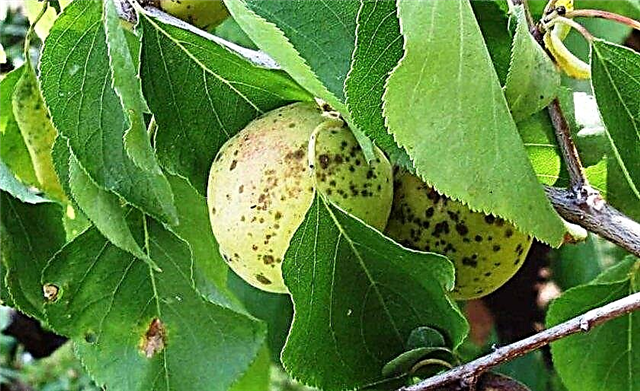
In addition, the Kichiginsky variety is subjected to the invasion of such pests:
- Leafloader. The main sign of its appearance is foliage folded into a tube, as well as the appearance of cracks in the bark. To get rid of the pest, you need to process the plant "Chlorophos". For preventive purposes, the plant should be sprayed with insecticides in early spring and late autumn.

- Weevil. It affects leaves and inflorescences; in severe forms of the disease, the leaves fall off. For the treatment of wood, Decis and Kinmix preparations are used. For prevention purposes, they dig the soil around the tree trunk, and in the beginning of spring and late autumn they treat the plant with insecticides.
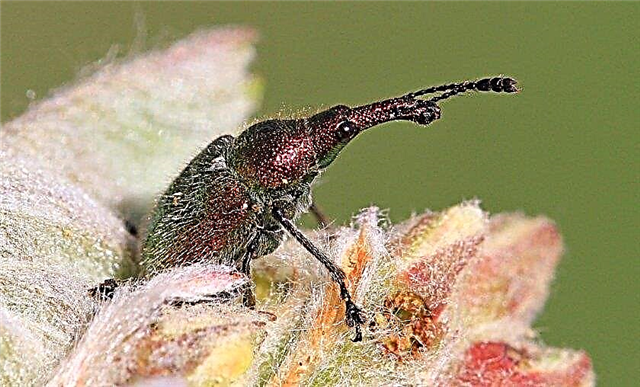
Harvesting and storage
Harvesting this variety of apricots is carried out in early or mid-August. Fruits are well tolerated because they have a hard peel. In addition, they can be stored for a long time in the refrigerator (10-14 days). They are suitable for making jams, preserves, compotes and various preservation. To extend the shelf life, apricots can be frozen for the winter.
Having familiarized yourself with the main characteristics, timing and technology of planting apricot varieties Kichiginsky, as well as knowing the rules for its care and clearly following them, you can get a rich harvest of delicious fruits.





